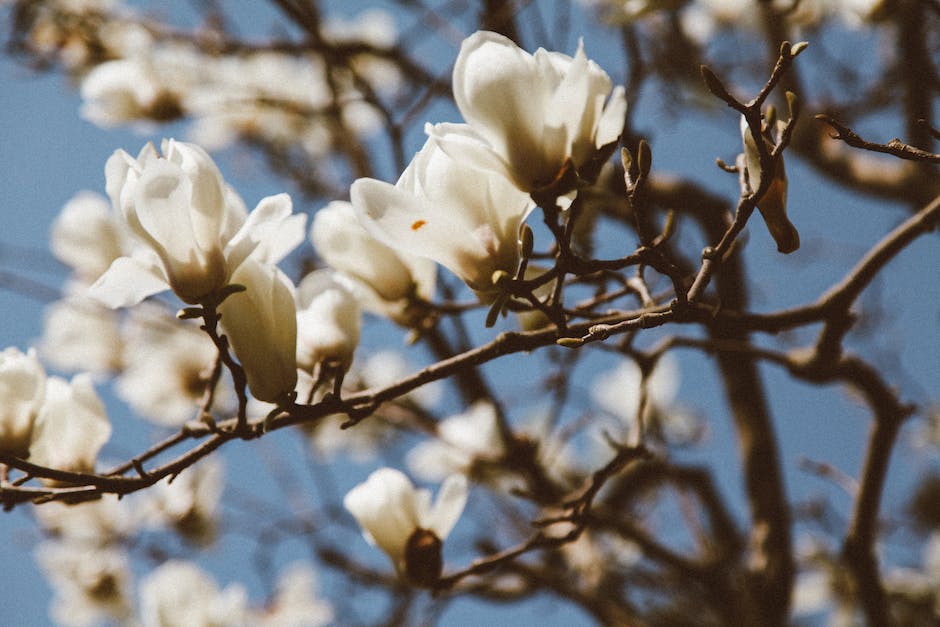Guide to Growing a Magnolia Tree from Seed

Seeking to understand the fascinating world of magnolia trees can begin right at your home. These trees, known for their stunning blooms and elegant forms, are a jewel in any garden. You might think growing them from seed seems daunting or maybe impossible, but by employing the right techniques and preparations, anyone can succeed. This journey will take you through the essential steps of seed collection, the stratification process, and the planting and care of your emerging magnolia trees. Guiding you to accurately time the collection of magnolia seeds, execute the important stratification procedure, and providing key insights about nurturing the seedling growth, we ensure you comprehend the whole process in detail.
Seed Collection
Enthusiasts of magnolia trees are truly rewarded when they delve into the fascinating experience of harvesting magnolia seeds. This process, although meticulous, is delightfully rewarding and holds the magic to propel this cherished hobby further. Having amped up skills and knowledge over time, one can confidently identify the perfect moment to harvest the seeds and the correct procedure for doing so. So, get that green thumb ready; it’s time to unlock the enigma of magnolia seed harvesting!
Firstly, timing is crucial. Magnolia seeds are mature for collection in late summer or early fall, typically from mid-August through October. The perfect cue that magnolia seeds are ready is when their conelike seed pods start to split open. Within these pods, one can see a striking array of shiny red seeds peeking out from their protective cover. It is fundamental not to rush the process – only seeds from a pod that is genuinely open should be harvested, ensuring absolute seed maturity.
One adroit trick is to harvest the seeds at a time when they are naturally releasing. Let us dig into this method. It starts by inspecting the tree, particularly watching for brown cones beginning to open. If synthetic fiber-like structures, known as floss, begin to emerge, it’s time to act fast! Here’s how to go about it:
-
Using pruners, cut off a few opened cones from the branches, ensuring minimal damage to the tree. Don’t forget your gloves; these cones can be quite prickly!
-
Next, spread newspaper out and place the pods on them to dry out for about a week. The drying process makes it easier to extract the seeds.
-
After drying, break open the pods and extract the seeds from within. The protective coverings can sometimes be hard and sticky, so patience and care are required. Use a knife for stubborn pods, but be careful not to damage the seeds inside.
-
At this point, the bright red seeds are ready. However, some may have a thin, slippery coat around them. This coating should be removed by gently rubbing the seeds between two paper towels until it peels off.
-
Time to provide the seeds with the winter-like conditions they prefer. Moist (but not soaked) peat moss is an excellent choice for burying the seeds. This moist “bedding” should then be placed in a sealable plastic bag and refrigerated for about 3-6 months. This simulates the winter cold stratification period the seeds need to germinate.
-
After the stratification period, sow the seeds in a pot filled with good-quality potting soil, covering them lightly. Water the soil regularly but don’t make it soggy. With warmth and patience, sprouts should begin to poke through the soil, marking the start of new magnolia saplings.
There you have it: the intriguing adventure of harvesting magnolia seeds! It’s science, patience, and pure gardening art all entwined. Rich in beauty and complexity, just like the magnolia trees themselves, this process is sure to infuse life into your hobby and garden. So get harvesting; your future magnolias are all in a seed’s work!

Stratification Process
Now that we’ve dwelled into the intriguing details of harvesting magnolia seeds, let’s apply an exciting principle known as stratification, to ensure every seed germinates into beautiful magnolia plants. Stratification! Sounds like a complex term, right? But in truth, this fancy term simply involves providing your magnolia seeds with the exact chill they need to break dormancy and germinate beautifully. Let us delve into this process and see how you can apply it correctly.
Stratification is a horticultural method that kickstarts the germination process of seeds by mimicking the natural conditions that seeds would experience in their native environment. Essentially, stratification involves subjecting seeds to cooler temperatures and moisture, often for a specific period. In fact, stratification has proven so effective that seeds which may usually take a year to germinate can often be sprouted in as little as one to three months!
To start the stratification process, fill a plastic bag with moist sand or vermiculite, then mix in the magnolia seeds. A 50:50 ratio of seeds to medium is usually about right. Ensure the sand or vermiculite is damp, not soaked. Overly wet conditions might foster fungus or mold growth. Once you have your bag filled and the seeds mixed in, simply seal the bag and place it in the back of your refrigerator. Ideally, the temperature should remain at about 34-41°F (1-5°C).
Now, here’s where patience truly pays dividends in the game of horticulture. Leave the seeds to chill for about 90 to 120 days. This chilling period mimics the natural winter season and is crucial to breaking seed dormancy. During this phase, you’ll want to check on your seeds every week or so to maintain optimal moisture and check for signs of germination or decay.
After the stratification period, the seeds are ready to sow! Fill a pot with a well-draining soil mix, ideally, a blend of equal parts gardening soil, sand, and compost. Bury the seeds just beneath the soil surface and water gently until the soil is evenly moist. Then, place the pots in a warm location with indirect sunlight and maintain consistent moisture in the soil.
In no time, you’ll notice tiny magnolia plants sprouting, a truly rewarding sight after your dedicated efforts. As one navigates the gardening journey, stratification proves not only a life-saver technique for magnolia seed germination but also an exciting subject of exploration. Remember, always value patience and precision, for these virtues define your gardening prowess. Here’s to your growing magnolia garden and the adventures it brings every day!

Planting and Care
Once the thrill of seed harvesting and the anticipation of stratification for the sprouting of magnolia seeds has been experienced, the next step in this delightful horticultural journey is to guide these seeds into becoming mature and thriving trees. Considering that you’ve abided by the hard and fast rules of timing, protected against environmental odds, and took up the labor of love of the chilling period, you’re now presented with a sprouting seedling – a reflection of dedicated effort and loving care. Here’s your roadmap on how to propel your sprouted seedling towards the next phase of maturity.
- Step One: Gradual Acclimatization: Before you kickstart the process of planting, it is paramount that the sprouted seedlings get gradually acclimatized to outdoor conditions, a step termed as ‘hardening off’. This can be achieved by gradually increasing their exposure to sunlight over a period of seven to ten days.
- Step Two: Choosing the Perfect Spot: One crucial aspect to consider while planting a magnolia tree is sun exposure. An ideal location would be a spot that helps the tree enjoy the morning sun while providing partial shade in the afternoons.
- Step Three: Perfect Soil Conditions: Magnolia trees are fans of acidic to neutral, well-draining soil. Aim for a pH of around 5.5 to 7.0 to keep your seedling happy. If you find your soil lacking, you can amend it with soil enhancers to match the necessary conditions.
- Step Four: Digging the Hole: The hole for planting should be approximately three times the size of your seedling’s root ball but not deeper than the root ball itself.
- Step Five: Planting the Sprout: Place your magnolia seedling in the hole. Fill it up with soil till the level of the surrounding ground. Remember, a good job done here will not only promote healthy root growth but ensure that your tree grows straight and tall.
- Step Six: The Life Juice – Water: Once planted, water your magnolia seedling thoroughly. Ideally, it would be best if you maintain a watering schedule where it receives an inch of water every week until it is established. Remember, moderation is key, as magnolias don’t love being waterlogged.
- Step Seven: Mulching: Mulching helps retain soil moisture, keep the roots warm during winter, and discourage the growth of weeds. However, be cautious to avoid piling the mulch against the trunk, which can become a breeding ground for pests and diseases.
- Step Eight: Keeping an Eye on Health: Keep a keen eye on your magnolia tree for any signs of disease or pests. Regularly checking your tree can help prevent minor issues from turning into major problems.
To conclude, planting and caring for a magnolia seedling is so much more than following a sequence of steps. It’s a process that requires understanding, patience, and an ever-present excitement towards nature’s wondrous ways. Through all its stages, from seed collection to tree maturity, the magnolia tree’s cultivation is a testament to the strength of nature and the devotion of the gardener—a harmonious combination that results in a deeply rewarding experience.

Armed with the correct knowledge of seed collection, stratification, and planting techniques, you are well on your path to successfully growing your very own magnolia tree. While each stage may require careful attention to detail, the result is incredibly rewarding. Over time, as you watch your trees prosper under your dedicated care, you’ll appreciate the unique beauty they bestow upon your yard. May this guide empower you to approach magnolia seed cultivation with confidence and enjoy the process of nurturing your baby seed into a majestic magnolia tree.



